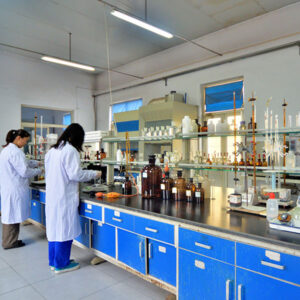Performance in Specific Scientific and Industrial Techniques: Lithium Dodecyl Sulfate (LDS) vs. Sodium Dodecyl Sulfate (SDS)
When comparing Lithium Dodecyl Sulfate (LDS) and Sodium Dodecyl Sulfate (SDS), their performance in specific scientific and industrial techniques is a key consideration. Each surfactant has unique properties that make it suitable for particular applications. Below is a detailed exploration of their performance in various contexts:
- Electrophoresis and Protein Analysis:
Sodium Dodecyl Sulfate (SDS):
Standard in SDS-PAGE: SDS is the gold standard for denaturing proteins in polyacrylamide gel electrophoresis (SDS-PAGE). It binds uniformly to proteins, imparting a negative charge proportional to their length and allowing size-based separation.
Reproducibility: The use of SDS in protein electrophoresis is well-documented and provides highly reproducible results. It’s an essential tool for molecular biology and biochemistry labs.
Lithium Dodecyl Sulfate (LDS):
Potential in Protein Analysis: LDS may offer unique advantages in protein analysis where lithium ions can influence protein denaturation or stabilization differently compared to sodium ions. Further research is needed to establish its efficacy in electrophoresis.
Alternative Applications: LDS could be explored as an alternative in scenarios where its specific ionic properties provide distinct benefits, potentially leading to new methodologies in protein analysis.
- Detergent and Cleaning Applications:
SDS:
Widely Used Detergent: SDS is a powerful detergent commonly used in household cleaning products, personal care items, and industrial cleaners. Its strong emulsifying properties make it effective in removing oils and grease.
Foaming and Cleaning Efficiency: SDS is known for its high foaming ability and excellent cleaning efficiency, making it a reliable choice for a wide range of cleaning applications.
LDS:
Specialized Cleaning Applications: LDS could be used in specialized cleaning products where its unique properties offer advantages over SDS. For example, its interaction with specific contaminants or surfaces might be more effective in certain industrial settings.
Comparative Efficiency: While LDS might not be as widely used as SDS, in specific formulations it could potentially offer enhanced performance, especially in niche markets where tailored cleaning solutions are required.
- Pharmaceutical and Biochemical Applications:
SDS:
Protein Denaturation: SDS is extensively used in biochemical research for protein denaturation and solubilization, critical for studying protein structure and function.
Drug Formulation: SDS can be used in pharmaceutical formulations to enhance the solubility of certain drugs, improving their bioavailability.
LDS:
Unique Ionic Properties: The lithium component of LDS might interact differently with biological molecules, potentially offering new ways to study and manipulate proteins and other biomolecules. This could lead to novel pharmaceutical applications.
Drug Delivery: LDS could be explored for its potential in drug delivery systems, especially if its properties enhance the stability or delivery efficiency of therapeutic compounds.
- Industrial Processes and Manufacturing:
SDS:
Versatile Industrial Surfactant: SDS is used in numerous industrial processes, including textile manufacturing, paper production, and emulsion polymerization. Its ability to reduce surface tension and act as a dispersant makes it highly versatile.
Cost-Effective: SDS’s cost-effectiveness and efficiency make it a preferred choice in large-scale industrial applications.
LDS:
Niche Industrial Applications: LDS might be used in niche industrial applications where its properties offer specific advantages, such as in processes requiring the unique ionic characteristics of lithium.
Enhanced Performance: In some manufacturing contexts, LDS could provide enhanced performance, particularly in precision industries where specific surfactant properties are critical for process optimization.
- Cosmetic and Personal Care Products:
SDS:
Widespread Use in Cosmetics: SDS is commonly found in shampoos, toothpastes, and other personal care products due to its effective cleansing and foaming properties.
Potential Irritation: The use of SDS in cosmetics is sometimes limited by its potential to cause skin and eye irritation, necessitating careful formulation to mitigate these effects.
LDS:
Potential for Gentler Formulations: LDS might offer a gentler alternative in personal care products, especially if its interaction with skin and hair reduces irritation compared to SDS. This could make it suitable for sensitive skin products.
Innovative Cosmetic Applications: LDS’s unique properties could be leveraged to develop new cosmetic formulations that offer specific benefits, such as enhanced moisturization or targeted cleansing.
- Environmental and Agricultural Applications:
SDS:
Environmental Remediation: SDS is used in environmental remediation efforts, such as soil washing and groundwater treatment, to remove hydrophobic contaminants.
Agricultural Use: SDS can be used in agricultural formulations to enhance the spread and penetration of pesticides and herbicides.
LDS:
Potential in Environmental Science: LDS might offer benefits in environmental applications, particularly if its lithium component provides improved interaction with certain contaminants or pollutants.
Agricultural Innovations: LDS could be explored for its potential in agricultural formulations, potentially offering more efficient or targeted application of agrochemicals.
- Research and Development:
SDS:
Well-Established Research Tool: SDS is a well-established research tool with extensive literature and protocols available for its use in various scientific techniques.
Standardization and Reliability: The widespread use of SDS ensures standardized and reliable results across different laboratories and studies.
LDS:
Research Opportunities: LDS presents opportunities for new research, particularly in exploring its unique properties and potential applications. This could lead to innovative techniques and discoveries in various scientific fields.
Custom Applications: Researchers might develop custom applications for LDS in contexts where its specific properties offer distinct advantages, contributing to advancements in science and technology.
In summary, while SDS is a well-established surfactant with a broad range of applications, LDS offers unique properties that might make it suitable for specialized scientific and industrial techniques. The choice between LDS and SDS depends on the specific requirements of the application, including performance needs, cost considerations, and potential benefits of their unique properties. Understanding these factors helps in selecting the appropriate surfactant for optimal results.











